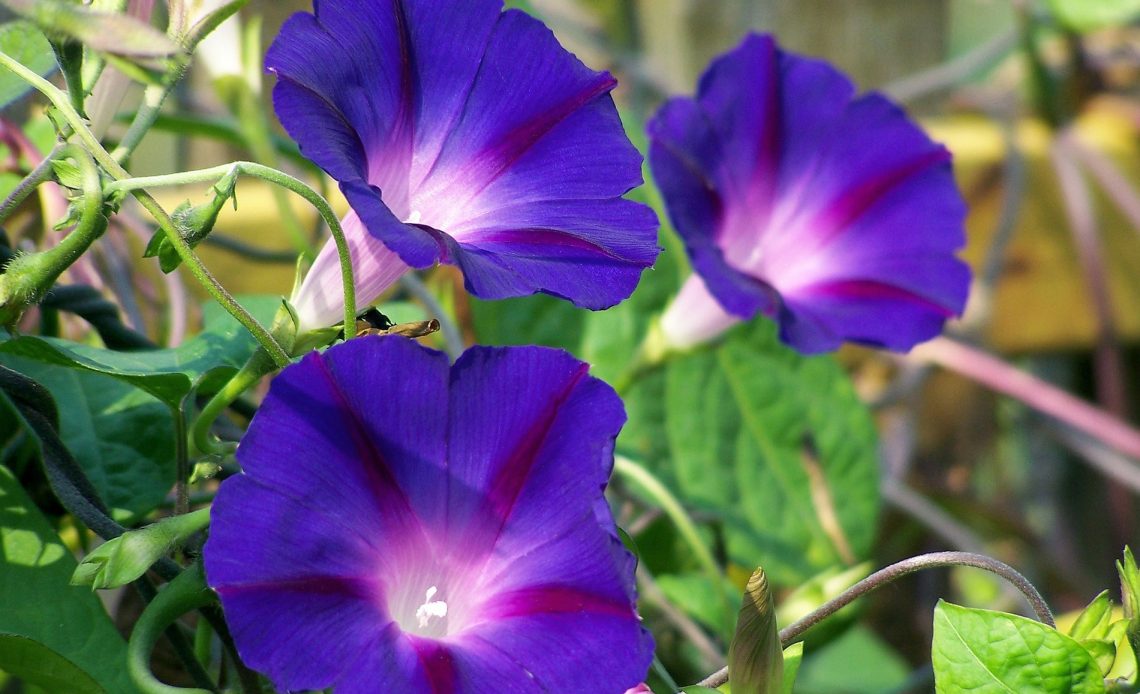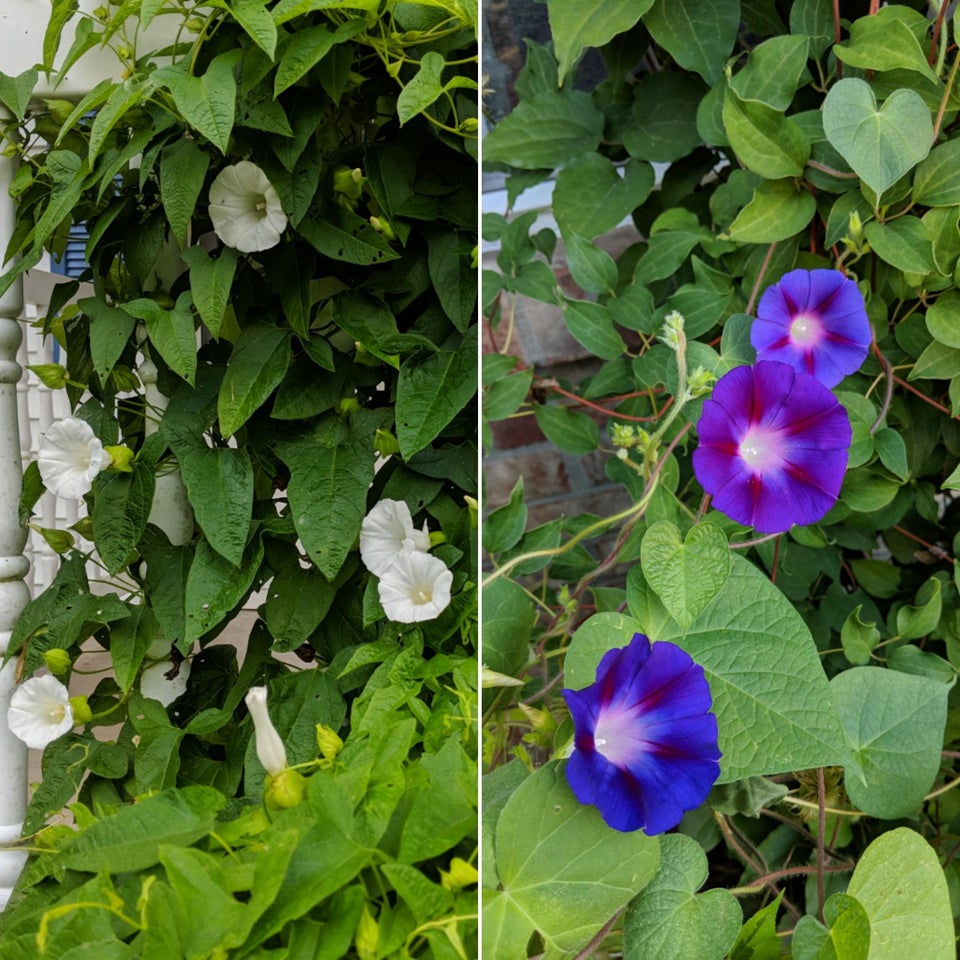

We’re here to help! Wild Yards is a completely free website that is 100% dedicated to helping you create a wildlife-friendly, sustainable yard. Read more
WildYards is reader-supported. When you buy a product through a link on our site, we may earn a comission. Every product is independently selected by our (obsessive) editors and our reviews are unbiased and objective. Read more about our mission or our privacy policy.
Morning glories can be quite controversial as plants go! Gardeners worldwide cannot agree on whether they are annoying, ever-climbing weeds or beautiful wildflowers that are always worth propagating. Many of us prefer keeping them around, but do hummingbirds like morning glories?
Hummingbirds find morning glories very attractive. It’s mainly thanks to their fantastic color palette and promise of nectar! However, their reputation for being weed-like seems to stem from their propensity to grow thick and fast. This is, of course, great news for pollinators.
Do morning glories produce nectar?
Morning glories produce abundant nectar, making them fantastic for all kinds of pollinators, including bees, butterflies, and of course, hummingbirds. Their shape, in particular, is fantastic for hummingbirds, as their long, thin beaks can easily probe into the long, trumpet shape of the flowers.
Their colors are also key factors in attracting hummingbirds. They bloom in reds, pinks, yellows, blues, purples, and whites. Bright-colored flowers always do better at attracting pollinators than pure white or even darker hues.
Are morning glories the best plants for attracting hummingbirds?
There’s lots of competition – many plants that attract hummingbirds, such as fuchsias, azaleas, snapdragons, and dipladenias, are all just as likely to appeal to pollinators. There is no one ‘best’ plant for attracting hummingbirds! These birds enjoy a varied platter of nectar from various flowers and sources. Therefore, it’s good to grow morning glories alongside potted plants, shaded plants, and even hanging plants that attract hummingbirds.
However, morning glories may not be the ideal plant for your gardening habits. These are fast-growing, drought-hardy greens that can self-seed. This means they need little encouragement in spreading thick and fast.
These plants can be mistaken for bindweed, which is loosely related to the morning glory. Bindweed is just as quick to grow and spread. However, it roots deeper – and it’s considered highly invasive. You’ll tell if you have bindweed as their leaves are sharper-headed, and vines are thinner.

A word of warning – morning glories can be toxic to cats and dogs. Therefore, take caution if you have pets regularly playing in your garden! They shouldn’t pose any harm to hummingbirds or other pollinators dipping in for a drink of nectar, however.
If your pet ingests any part of a morning glory or any seeds, they are likely to vomit – call your local veterinarian for immediate advice if this occurs.
Where is the best place to plant morning glories?
As the name suggests, morning glories love the sunlight. Therefore, they need to be planted where there is plenty of sun for them to enjoy. Conversely, they are still relatively fragile flowers that will easily come off of the stems.
That’s why it is a good idea to keep them in a relatively sheltered area with that in mind. That is to say, near bushes, trees, walls, etc. Growing your morning glories along a trellis or even a fence will help to protect the stems and the flowers. It will also make it easier for you to maintain, as they can grow very long.
If you do wish to try bringing hummingbirds to your yard with morning glories, position and grow them somewhere unlikely to obstruct other plants. You should sow them in the late spring for the best results, too.
Opt for a spot with well-draining soil. As resilient as these plants are, they need plenty of water and nutrient-rich soil to thrive. Once they have been planted, simply remember to keep the soil moist and deadhead them throughout the season.
Are morning glories easy to grow?
As fragile as they may seem, morning glories are, in fact, very resilient and easy to grow. Most morning glories are annual flowers and usually come through between May and September. However, some do flower every year and continue to grow throughout the warmer seasons. You’ll likely be able to grow them in time for hummingbirds visiting your garden.
You can attract hummingbirds with morning glories across USDA zones 3 up to 10. If you go walking in the wilds close to the Californian coast, you’re most likely to see these vines creeping up all around.
Given the toxicity of morning glories, and their propensity to grow rapidly in a short space of time, you may wish to choose a more predictable vine to attract hummingbirds for your garden! In which case, the Wild Yards team highly recommends clematis or mandevilla, both of which will attract hummingbirds just as strongly.
